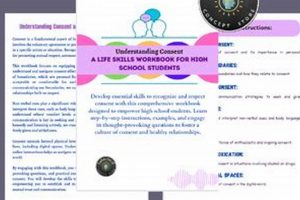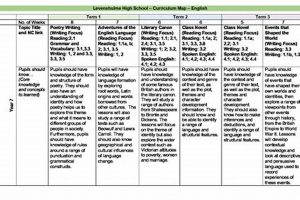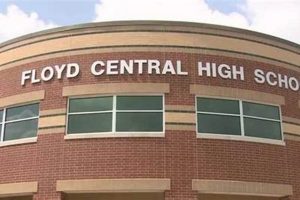A half-century after graduation, classmates gather to commemorate their shared educational experience. This milestone event typically involves social gatherings, reminiscing, and reconnecting with individuals who played a significant role during formative years. These gatherings often include meals, entertainment, and opportunities to share memories and life updates.
Such an event offers a unique opportunity to reflect on life’s journey, reconnect with old friends, and celebrate shared history. It provides a chance to mend broken relationships, rekindle friendships, and forge new connections. Historically, these events have served as important cultural touchstones, marking significant passages of time and strengthening community bonds. They offer a valuable perspective on the passage of time and the evolution of individual lives.
This article will explore the planning process, typical activities, and lasting impact of these gatherings. It will also delve into the emotional significance of such occasions and the role they play in preserving collective memory.
Tips for a Successful 50-Year Reunion
Careful planning and execution are crucial for creating a memorable and meaningful event. The following tips offer guidance for organizing a successful celebration.
Tip 1: Start Early: Commencing the planning process well in advance allows ample time for essential tasks such as locating classmates, securing a venue, and arranging catering. A longer lead time also provides flexibility for unforeseen circumstances.
Tip 2: Form a Committee: Establishing a dedicated planning committee distributes responsibilities and fosters collaboration. Diverse skill sets within the committee can ensure all aspects of the event are addressed effectively.
Tip 3: Leverage Technology: Utilizing online platforms and social media can streamline communication and facilitate outreach to classmates. Dedicated websites or social media groups can serve as central hubs for information sharing.
Tip 4: Consider Accessibility: Event venues should be accessible to individuals with mobility limitations. Accommodations for dietary restrictions and other special needs should also be taken into account.
Tip 5: Incorporate Memorabilia: Displaying photographs, yearbooks, and other nostalgic items can enhance the event’s atmosphere and spark conversations. Consider creating a slideshow or video montage showcasing memories from school days.
Tip 6: Plan Engaging Activities: Organizing activities beyond the main reception can cater to diverse interests and encourage interaction. Options might include tours of the former school building, themed gatherings, or group excursions.
Tip 7: Keep it Affordable: Establish a realistic budget early in the planning process and explore cost-effective options for venues, catering, and entertainment. Transparency regarding expenses is essential for maintaining trust among classmates.
Implementing these strategies can contribute significantly to a successful and memorable event. Focusing on inclusivity, engagement, and thoughtful planning ensures a fitting celebration of this significant milestone.
By following these guidelines, organizers can create a reunion that not only commemorates the past but also strengthens bonds for the future.
1. Nostalgia
Nostalgia plays a pivotal role in the significance of a 50-year high school reunion. It serves as a powerful catalyst for connection, reflection, and celebration, shaping the emotional landscape of the event. Understanding its multifaceted influence provides valuable insight into the enduring appeal of these gatherings.
- Shared Experiences:
Shared experiences form the bedrock of nostalgia. Reunions offer opportunities to revisit formative moments, from football games and school dances to classroom antics and late-night study sessions. These shared memories, often embellished by time and collective retelling, evoke a powerful sense of connection and belonging. Recalling a specific inside joke or a memorable school event can trigger waves of nostalgia, strengthening bonds between classmates.
- Sensory Triggers:
Sensory details, such as the sight of old yearbooks, the sound of popular music from that era, or even the smell of the school cafeteria, can act as powerful triggers for nostalgic feelings. These sensory cues transport individuals back in time, evoking visceral memories and emotions. A familiar song playing at the reunion can instantly evoke memories of a school dance, intensifying the nostalgic experience.
- Idealized Past:
Nostalgia often involves an idealized view of the past. The challenges and anxieties of adolescence may fade with time, leaving behind a romanticized image of carefree days and strong friendships. This idealized perspective contributes to the positive emotional resonance of reunions. Remembering high school as a time of close-knit friendships and exciting experiences, even if reality was more nuanced, enhances the emotional impact of the reunion.
- Emotional Resonance:
The emotional resonance of nostalgia stems from its connection to personal identity and formative experiences. Revisiting these memories can provide a sense of continuity and grounding, reinforcing one’s sense of self. Reconnecting with classmates after decades can validate life choices and offer a sense of perspective on personal growth. This emotional depth contributes to the enduring power and appeal of 50-year reunions.
These interwoven facets of nostalgia contribute significantly to the transformative potential of a 50-year high school reunion. By tapping into shared experiences, sensory triggers, idealized memories, and emotional resonance, these gatherings offer a unique opportunity to revisit the past, celebrate the present, and strengthen bonds for the future.
2. Reconnection
Reconnection forms a cornerstone of the 50-year high school reunion experience. The passage of five decades often leads to significant life changes, geographical dispersion, and evolving social circles. These reunions provide a structured opportunity to bridge the temporal and spatial gaps, re-establishing contact with individuals who shared formative experiences. This re-establishment of contact can manifest in various ways, from casual conversations reigniting dormant friendships to deeper engagements exploring shared life journeys. For instance, classmates who drifted apart after graduation may rediscover common interests and values, forging new connections grounded in shared history. Alternatively, individuals who maintained consistent contact over the years can deepen existing bonds through face-to-face interaction, strengthening relationships that have endured the test of time. The potential for reconnection extends beyond individual relationships, fostering a renewed sense of community among the graduating class.
The significance of reconnection within the context of a 50-year reunion extends beyond mere social interaction. It offers a unique opportunity for reflection on personal growth and shared history. Reuniting with classmates after such a significant period allows individuals to gain perspective on their own life trajectories while simultaneously witnessing the diverse paths taken by their peers. This shared reflection can be profoundly impactful, offering validation, inspiration, and a sense of belonging. For example, hearing about a classmate’s perseverance through adversity can inspire others facing similar challenges. Conversely, sharing personal triumphs and milestones can create a sense of collective achievement, strengthening the bonds within the alumni community. Furthermore, reconnecting with individuals who knew one another during formative years can offer valuable insights into personal identity and development.
Understanding the multifaceted nature of reconnection at 50-year high school reunions provides valuable insight into their enduring appeal. These events offer not just a nostalgic trip down memory lane but also a powerful opportunity for personal growth and community building. Recognizing the potential for both individual and collective transformation underscores the importance of fostering an environment conducive to meaningful reconnection. Addressing potential barriers, such as social anxiety or pre-existing interpersonal conflicts, can enhance the overall experience and maximize the potential for positive outcomes. Ultimately, fostering reconnection serves as a crucial step toward ensuring a successful and impactful reunion experience, strengthening the bonds of shared history and creating a lasting legacy for the graduating class.
3. Commemoration
Commemoration forms a significant component of 50-year high school reunions, representing more than simply a celebratory gathering. It signifies a collective acknowledgement of shared history, recognizing the passage of time and the enduring impact of formative experiences. This commemorative aspect adds depth and meaning to the reunion, transforming it into a significant milestone.
- Shared History:
Reunions offer a platform to commemorate the shared history of a graduating class. This shared past encompasses not only academic pursuits but also extracurricular activities, social events, and the prevailing cultural context of their era. Recalling significant school events, influential teachers, or even prevailing fashion trends can evoke a powerful sense of collective identity, reinforcing the bonds forged during adolescence. For example, acknowledging the school’s championship win in a particular sport or a memorable performance by the school choir can serve as a focal point for shared reminiscence and celebration.
- Life’s Journey:
A 50-year reunion inherently commemorates the individual life journeys of each classmate. The event provides an opportunity to acknowledge personal achievements, milestones, and challenges overcome. Sharing stories of career successes, family life, and personal growth can foster a sense of collective pride and mutual respect. Conversely, acknowledging life’s inevitable setbacks and losses can create a space for empathy and support, strengthening the bonds of community within the graduating class. A moment of silence for classmates who have passed away, for instance, can be a poignant act of commemoration.
- Legacy and Impact:
Commemoration within the context of a 50-year reunion extends beyond individual and collective experiences to encompass the broader impact of the graduating class. This includes recognizing contributions to their communities, professions, and families. Celebrating achievements in fields such as education, healthcare, or public service can inspire future generations and underscore the lasting impact of the class. Acknowledging philanthropic efforts or community involvement further reinforces the positive legacy of the group. Highlighting the establishment of a scholarship fund in the class’s name, for instance, exemplifies this commemorative element.
- The Passage of Time:
The 50-year mark itself represents a significant passage of time, a milestone worthy of commemoration. The reunion serves as a collective acknowledgement of this temporal landmark, prompting reflection on the journey from adolescence to later life. This recognition of time’s passage can evoke a range of emotions, from nostalgia and gratitude to a renewed appreciation for the present moment. A display of photographs spanning the five decades since graduation can serve as a visual representation of this passage of time, prompting reflection and shared memories.
These interwoven facets of commemoration enrich the 50-year high school reunion experience, transforming it from a simple social gathering into a meaningful and memorable event. By acknowledging shared history, individual journeys, collective impact, and the passage of time, these reunions provide a powerful platform for reflection, celebration, and community building. This commemorative aspect strengthens the bonds forged during formative years, creating a lasting legacy for the graduating class.
4. Reflection
Reflection forms an integral component of the 50-year high school reunion experience. The milestone prompts contemplation on the trajectory of life’s journey, encompassing personal growth, professional achievements, relationships, and evolving perspectives. This reflective process often occurs both individually and collectively, enriching the reunion experience and offering valuable insights.
The passage of five decades provides ample opportunity for personal evolution. Reunions offer a unique vantage point from which to assess this transformation. Reflecting on choices made, paths taken, and lessons learned can provide a sense of clarity and perspective. Comparing individual experiences with those of classmates can further illuminate these reflections, highlighting shared challenges and diverse approaches to life’s complexities. For instance, classmates might reflect on how their career aspirations evolved from youthful dreams to the realities of their professional lives, offering mutual support and understanding. Discussing family dynamics and relationships can also provide valuable insights and a sense of shared experience.
The reflective process often extends beyond personal experiences to encompass broader societal changes. Reunions can spark discussions about evolving social norms, technological advancements, and historical events that shaped the lives of the graduating class. Reflecting on these shared experiences fosters a deeper understanding of the historical context that shaped individual lives and perspectives. This shared reflection can lead to meaningful conversations about social justice issues, political movements, and cultural shifts that impacted the class over the decades. Such discussions can foster a renewed sense of community and shared purpose, strengthening the bonds between classmates.
Understanding the importance of reflection within the context of a 50-year high school reunion provides valuable insights into its enduring appeal. These gatherings offer not only a chance to reconnect and reminisce but also a platform for personal growth and collective understanding. Recognizing the potential for transformative reflection underscores the importance of creating a space conducive to thoughtful conversation and shared introspection. Addressing potential emotional sensitivities and fostering an inclusive environment allows participants to engage in meaningful reflection, enriching the reunion experience and strengthening the bonds of shared history. This reflective process, both individual and collective, contributes significantly to the lasting impact of these milestone events.
5. Celebration
Celebration forms a core element of 50-year high school reunions, marking not only a temporal milestone but also the enduring bonds of friendship and shared experience. These celebratory events provide an opportunity to acknowledge accomplishments, recognize shared history, and appreciate the resilience of human connection over time. Understanding the multifaceted nature of celebration within this context enhances appreciation for its significance.
- Milestones Reached:
A 50-year reunion provides a platform to celebrate the significant milestones achieved by individual classmates. These accomplishments may encompass professional successes, personal triumphs, contributions to society, and the establishment of enduring family legacies. Sharing these achievements fosters a sense of collective pride and mutual respect, strengthening the bonds within the graduating class. Recognizing a classmate’s groundbreaking research, philanthropic endeavors, or artistic achievements, for instance, underscores the diverse talents and contributions within the group.
- Shared History Revisited:
Celebration extends beyond individual accomplishments to encompass the shared history of the graduating class. The reunion offers an opportunity to revisit cherished memories, relive formative experiences, and acknowledge the unique bond forged during adolescence. Recalling memorable school events, inside jokes, or shared struggles can evoke a powerful sense of nostalgia and reinforce the enduring connection between classmates. Sharing anecdotes about a particularly memorable school trip or a humorous incident from class can spark laughter and strengthen the sense of shared history.
- Endurance of Connections:
The very act of gathering for a 50-year reunion represents a celebration of the endurance of human connections. Despite the passage of time, geographical distance, and life’s inevitable challenges, these reunions demonstrate the lasting power of friendships and shared experiences. This resilience underscores the importance of community and the enduring impact of formative relationships. Simply being present at the reunion, reconnecting with old friends, and sharing life updates celebrates the enduring strength of these bonds.
- The Gift of Time:
A 50-year reunion inherently celebrates the gift of time and the opportunity to reflect on life’s journey. The event acknowledges the passage of five decades, marking a significant milestone in the lives of the graduating class. This recognition prompts reflection on personal growth, evolving perspectives, and the preciousness of time spent with loved ones. Sharing stories about life’s twists and turns, lessons learned, and the importance of family and friends underscores the value of time and the richness of life’s experiences.
These interwoven facets of celebration elevate the 50-year high school reunion beyond a simple social gathering. By acknowledging individual milestones, revisiting shared history, recognizing the endurance of connections, and appreciating the gift of time, these events offer a powerful platform for reflection, gratitude, and renewed appreciation for the enduring bonds of community. This celebratory aspect contributes significantly to the lasting impact of these milestone gatherings, strengthening connections and creating a lasting legacy for the graduating class.
6. Legacy
The concept of legacy assumes a profound significance within the context of a 50th high school reunion. This milestone event prompts reflection not only on individual lives but also on the collective impact of a graduating class. Legacy, in this context, encompasses the enduring contributions, shared memories, and lasting impact of a group of individuals who embarked on life’s journey together. Understanding the various facets of legacy enriches the reunion experience and provides a framework for appreciating its broader significance.
- Individual Achievements:
Individual legacies represent the cumulative accomplishments of each classmate over the course of five decades. These accomplishments may encompass professional achievements, contributions to their communities, philanthropic endeavors, and the establishment of enduring family legacies. Sharing these individual narratives during the reunion provides a platform for recognizing diverse talents and contributions, fostering a sense of collective pride and mutual respect. A classmate’s dedication to medical research, for instance, or their commitment to social justice activism, forms a part of their individual legacy.
- Collective Impact:
Beyond individual achievements, the collective legacy of a graduating class represents their combined impact on the world. This encompasses contributions to various fields, from education and healthcare to the arts and sciences. Recognizing this collective impact underscores the significant role that education plays in shaping future generations and contributing to societal progress. The establishment of a scholarship fund in the class’s name, for instance, or a joint effort to support a local charity, exemplifies their collective legacy.
- Shared Memories:
Shared memories constitute an intangible yet invaluable component of a class’s legacy. These memories, woven from shared experiences, inside jokes, and formative moments, create a unique tapestry of collective history. Preserving and sharing these memories during the reunion strengthens the bonds of community and ensures that the spirit of the class endures through time. A compiled collection of anecdotes and photographs from the school years, for example, serves as a tangible representation of this shared legacy.
- Inspiring Future Generations:
The legacy of a graduating class extends beyond their own accomplishments to encompass the inspiration they provide for future generations. Sharing life stories, lessons learned, and words of wisdom can inspire younger alumni and current students to pursue their dreams and contribute meaningfully to the world. Mentorship programs connecting alumni with current students, for instance, embody this aspect of legacy, fostering a sense of continuity and shared purpose across generations.
These interconnected facets of legacy contribute to the profound significance of a 50-year high school reunion. The event serves not only as a celebration of shared history but also as an opportunity to reflect on the enduring impact of a graduating class. Recognizing the multifaceted nature of legacy enriches the reunion experience and reinforces the importance of community, individual contributions, and the enduring power of shared memories.
7. Community
A 50th high school reunion serves as a powerful reminder of the enduring importance of community. The event itself represents a convergence of individuals who, despite the passage of time and diverse life paths, share a common bond forged during formative years. This shared history creates a sense of belonging and mutual understanding, fostering an environment conducive to reconnection and reflection. The reunion acts as a catalyst, rekindling dormant connections and strengthening existing relationships within the alumni community. For example, classmates who may have drifted apart after graduation can rediscover shared interests and values, forging renewed connections grounded in their shared past. Conversely, those who maintained consistent contact over the years can deepen existing bonds, reinforcing the strength and resilience of long-term friendships. This revitalization of community extends beyond individual relationships, fostering a sense of collective identity and shared purpose among the graduating class. Organizing community service projects as part of the reunion activities, for instance, can further strengthen this sense of collective purpose.
The sense of community fostered at a 50th high school reunion often extends beyond the immediate event. The renewed connections and strengthened bonds can lead to ongoing engagement within the alumni network, creating opportunities for continued support, collaboration, and shared experiences. This ongoing engagement might manifest in the form of regular social gatherings, online forums for communication, or collaborative projects aimed at giving back to the school or wider community. Establishing a mentorship program connecting alumni with current students, for instance, creates a bridge across generations, fostering a sense of continuity and shared purpose. Furthermore, the revitalized sense of community can provide a valuable support system for classmates navigating the challenges of later life, offering a network of individuals who understand and share similar experiences. This support can be particularly crucial during times of transition or personal difficulty, highlighting the practical significance of community in providing emotional and social support.
The connection between community and a 50th high school reunion underscores the enduring power of shared experiences and the importance of maintaining connections throughout life. While the passage of time and life’s inevitable changes can lead to diverging paths, the shared history of a graduating class creates a foundation for lasting community. Recognizing and nurturing this connection through events like reunions not only strengthens individual bonds but also fosters a sense of collective identity and shared purpose, enriching the lives of participants and contributing to a stronger, more connected alumni network. Addressing potential barriers to participation, such as financial constraints or social anxieties, can further enhance the inclusivity of the event and maximize its potential for strengthening the alumni community. Ultimately, understanding the profound connection between community and these milestone gatherings reinforces the importance of celebrating shared history and investing in the enduring power of human connection.
Frequently Asked Questions
This section addresses common inquiries regarding 50-year high school reunions, providing clarity and guidance for those considering attending or organizing such an event. Understanding these frequently raised points can enhance the overall experience and address potential concerns.
Question 1: How can classmates be located after such a long time?
Utilizing online resources such as social media platforms, alumni databases, and dedicated reunion websites proves invaluable. Traditional methods, such as contacting known associates of classmates or reaching out to former school staff, may also yield results. Professional search services specialize in locating individuals.
Question 2: What is the typical cost associated with attending a 50-year reunion?
Costs vary depending on factors such as venue, catering, entertainment, and commemorative materials. Organizers typically strive to establish a reasonable fee structure accessible to most attendees. Financial assistance programs or tiered pricing options may be available to address budgetary constraints.
Question 3: What if one experiences anxiety about attending a reunion after such a long absence?
Such feelings are common. Connecting with classmates beforehand through online platforms or smaller, informal gatherings can alleviate anxiety. Attending with a trusted friend or family member can provide additional support.
Question 4: What attire is considered appropriate for a 50-year reunion?
Dress codes range from business casual to semi-formal, depending on the planned activities and venue. Comfort and personal preference should be prioritized. Event-specific information provided by organizers will offer guidance.
Question 5: What activities are typically included in a 50-year reunion?
Common activities include welcome receptions, formal dinners, campus tours, memorial services, and entertainment. Organizers may also plan themed gatherings based on shared interests or extracurricular activities. Opportunities for informal socializing and small-group interactions are essential.
Question 6: What if one cannot attend the main reunion event?
Alternative opportunities for connection often exist. These may include smaller, regional gatherings, online forums, or virtual events. Organizers typically encourage participation in any form to foster community and connection.
Addressing these frequently asked questions provides a valuable resource for those navigating the complexities of 50-year high school reunions. These insights aim to foster participation, alleviate concerns, and enhance the overall experience for all attendees.
The following section will explore the lasting impact of these milestone events on individual lives and the broader alumni community.
50th High School Reunions
This exploration of 50-year high school reunions has delved into various facets of these significant events, from the meticulous planning required to the profound emotional impact they generate. Key aspects highlighted include the power of nostalgia in rekindling connections, the importance of commemoration in honoring shared history, and the opportunity for reflection on life’s journey. The celebration of individual and collective achievements, the exploration of legacy and its enduring influence, and the strengthening of community bonds further underscore the value of these gatherings.
These milestones offer a unique opportunity to reconnect with a shared past, celebrate the present, and contemplate the future. The insights gained, the relationships rekindled, and the memories revisited contribute to a deeper understanding of the enduring human connection forged during formative years. Active participation in these events, whether as an attendee or organizer, strengthens the fabric of the alumni community and enriches the lives of those involved, solidifying the significance of these gatherings within the broader tapestry of human experience.







